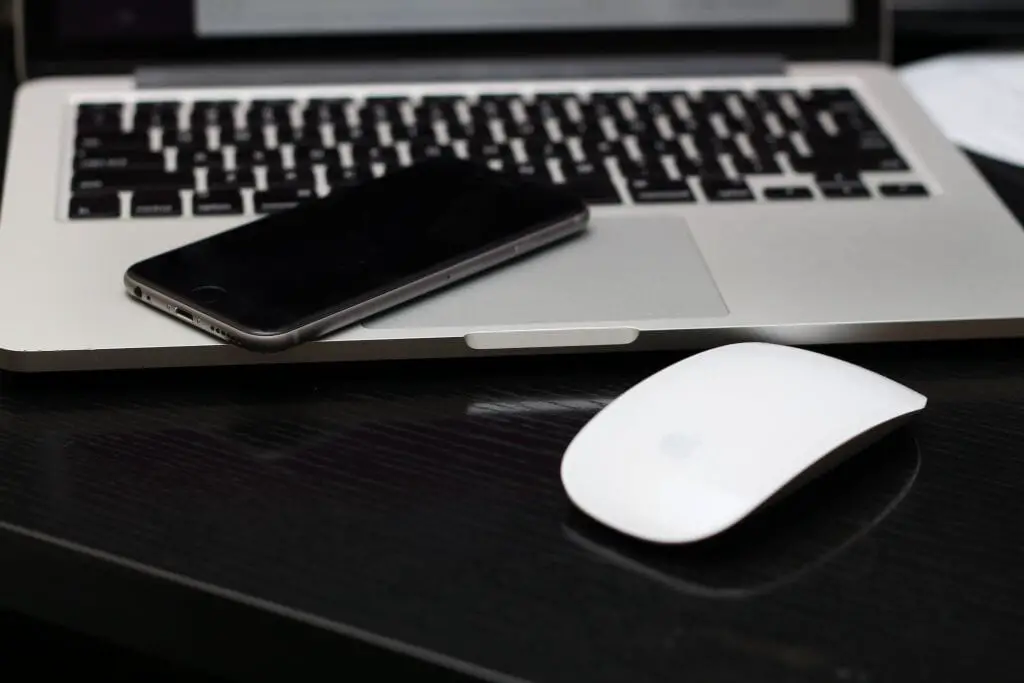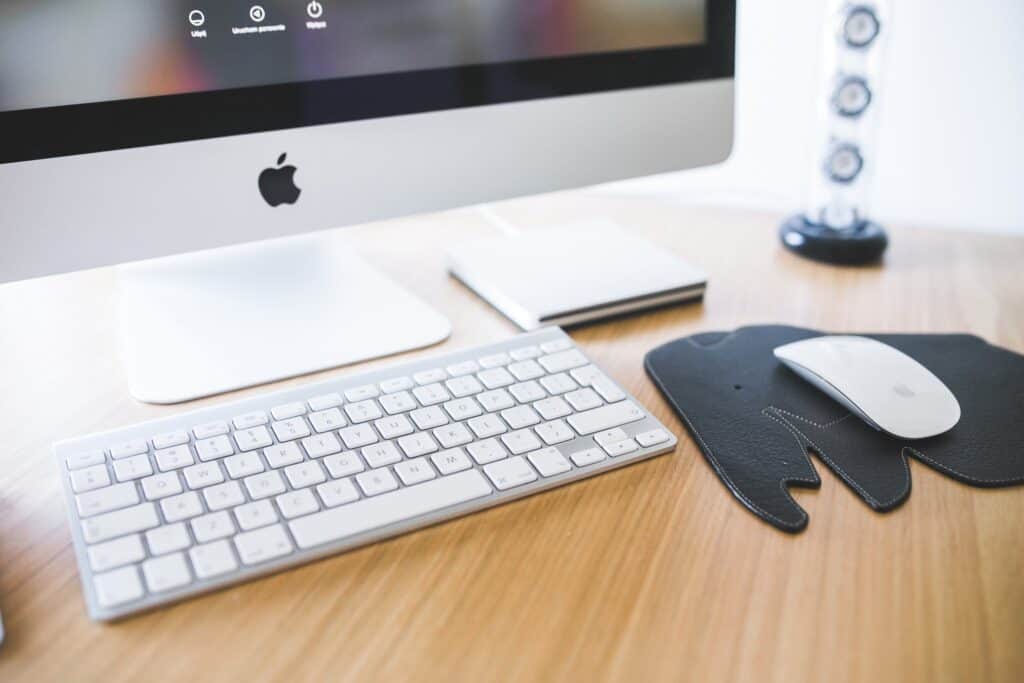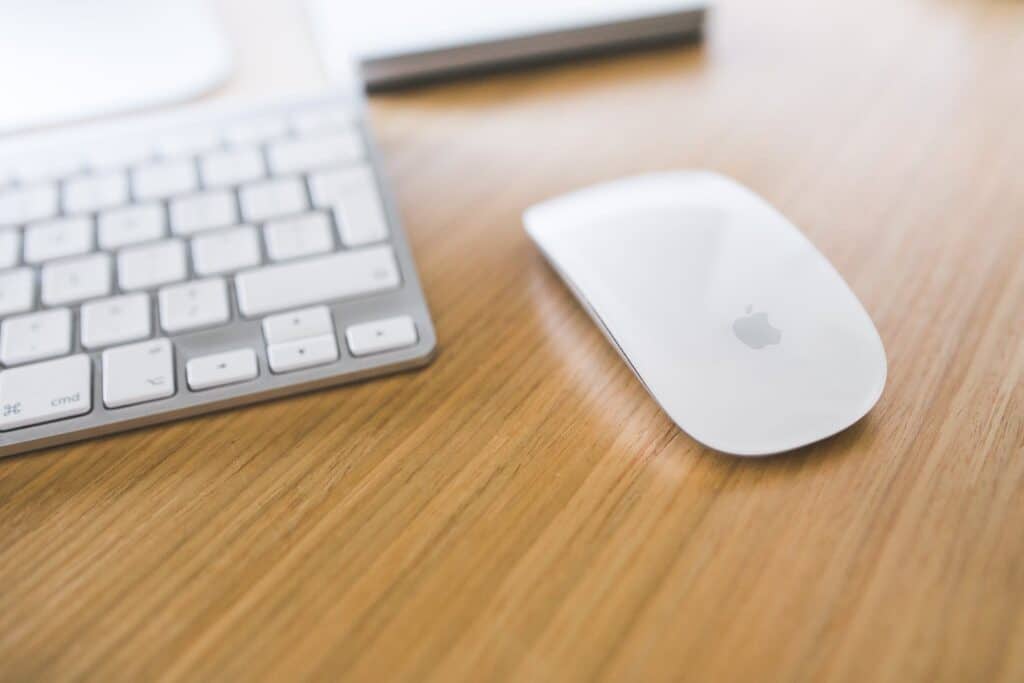Double-clicking on a Mac, whether using a mouse or trackpad, is a fundamental action for opening files, applications, and executing commands.
The process is simple but could be slightly different depending on the type of device being used. On a traditional mouse connected to a Mac, a quick, consecutive press on the left button performs a double-click.
This action, when done correctly, can enhance the user’s efficiency and streamline their workflow on a Mac.

For users operating with a trackpad, the method slightly differs. The trackpad on MacBooks or the external Magic Trackpad offers a range of gestures and touches to perform various tasks, including double-clicking.
Adjusting trackpad settings can allow users to double-tap on the surface to execute a double-click. This feature can be enabled by accessing the Trackpad settings in the System Preferences. It’s important to adjust the double-click speed to a comfortable level, so the system recognizes the action according to the user’s tapping speed.
Through these settings, users can customize their experience, tailoring it to their preferences for responsiveness and speed. It ensures that the act of double-clicking is as intuitive as possible, aligning with an individual’s unique usage style.
Understanding and customizing the double-click function is crucial for navigating the Mac operating system with ease.
Understanding Double-Click on Mac
When using a Mac, mastering the double-click is essential for efficient navigation and interaction with files and applications. This section will guide you through the nuances of double-clicking using a trackpad or a mouse, adjusting the double-click speed, and leveraging accessibility features to customize this gesture to your preference.
Trackpad vs Mouse Gestures
On Mac devices, the trackpad offers a unique set of gestures different from those of a traditional mouse. A double-click is performed on a trackpad by quickly tapping with one finger twice.
In contrast, with a mouse, this action involves pressing the left button quickly two times in succession. To enable trackpad tapping, navigate to System Preferences and select the Trackpad option under the Point & Click tab, where they can toggle the Tap to Click feature.
Configuring Double-Click Speed
Adjusting the double-click speed is a matter of personal preference and is accessible through System Preferences.
Inside the Mouse or Trackpad settings, users will find a slider allowing them to customize the time interval between clicks that the system registers as a double-click.
Moving the slider to the left makes the Mac more forgiving regarding the speed of double clicks, whereas sliding it to the right requires quicker consecutive clicks.
Accessibility Features
For individuals seeking alternative methods to perform a double-click, Mac’s accessibility features provide several options. By pressing Command + Option + F5 or tapping the Touch ID button three times, users can access a menu where Mouse Keys can be enabled. This allows one to double-click by tapping the number 5 key on the keyboard twice. This feature is particularly useful for those who have difficulties with the physical gestures required by a mouse or trackpad.
Executing a Double-Click

Double-clicking on a Mac can be done using various input methods, each having specific steps or settings to follow. Depending on whether one is using a mouse, a trackpad, or keyboard shortcuts, the way to execute a double-click can vary slightly to suit the specific hardware or accessibility preferences.
Using a Mouse
To double-click using a mouse, one simply quickly presses and releases the left button on the mouse twice. The clicks must be done in quick succession; otherwise, the Mac will register them as two separate clicks rather than a double-click.
The speed required for the Mac to recognize the action as a double-click can be adjusted by going to System Preferences > Mouse, where a slider allows one to set the double-click speed to their preference.
Using a Trackpad
To execute a double-click on a MacBook trackpad, users need to tap lightly twice in quick succession. In the Trackpad settings located under System Preferences > Trackpad > Point & Click, users should ensure the ‘Tap to click’ option is enabled.
For those who prefer a physical click, pressing down on the trackpad twice will also perform a double-click action. Adjustments to the trackpad’s clicking speed and sensitivity are available in the same Trackpad settings.
Using Keyboard Shortcuts
Users can also perform a double-click using keyboard shortcuts in combination with Mouse Keys, an accessibility feature.
To enable Mouse Keys, one must press the Command + Option + F5 keys together or tap the Touch ID button three times quickly, then toggle the Mouse Keys option.
Once Mouse Keys is active, position the cursor over the desired item and press the number 5 key twice on the numeric keypad to emulate a double-click action. This method is particularly useful for those who have difficulty with a mouse or trackpad.
Customizing Double-Click Settings

Tailoring the mouse interactions on a Mac can greatly enhance one’s computing experience. This section guides adjusting double-click settings to suit individual preferences.
Changing Double-Click Rate
To adjust the double-click speed for a mouse or trackpad on a Mac, users should navigate to System Preferences and select the Mouse or Trackpad option. There, the double-click speed slider allows them to customize how fast they must click for the system to register a double-click.
Moving the slider to the right increases the speed, requiring quicker clicks, while moving it to the left slows it down.
Button Configuration
Mac users have the option to tailor their mouse button configuration.
Within the Mouse settings, found under System Preferences, the user can designate which mouse button they prefer as their primary button.
Left-handed users often switch the primary button to the right side for a more intuitive experience.
Activating Secondary Click
The secondary click, also known as right-click, is essential for accessing contextual menus on a Mac. Users should go to Mouse or Trackpad settings in the System Preferences to activate or modify this function.
Checking the box for a Secondary click enables this handy feature, and users can select which side of the mouse will serve for the right-click action.
Troubleshooting Common Issues

When double-clicks fail to open files and folders on a Mac, it is essential to identify whether the cause is related to hardware, software, or settings. Proper troubleshooting can quickly resolve issues, restoring the ability to zoom with a double-click or navigate the Finder efficiently.
Dealing with Unresponsive Double-Click
If double-click actions are not registering, ensure that the Mouse settings in System Preferences are configured correctly.
The Double-Click Speed slider determines how fast the system recognizes consecutive clicks. If it’s set too high, the system might not recognize separate clicks as a double-click. Reducing the Double-Click Speed may resolve the issue of unresponsive double-click commands.
Adjusting Tracking and Scrolling Settings
In some cases, it is not the double-click itself but the tracking or scrolling that may seem unresponsive or erratic.
Open Mouse or Trackpad settings under System Preferences and adjust the scrolling speed or tracking to match personal preferences better. Balancing these settings can enhance overall control and responsiveness.
Hardware and Connectivity Checks
A common hardware issue arises from the mouse or trackpad itself. Verify the device is properly connected, whether by Bluetooth or USB.
For a Bluetooth device, pair the device again to ensure a stable connection. If the problem persists, check for physical damage or test with an alternate mouse or trackpad to isolate the issue. A responsive hardware device is critical for consistent double-click functionality.


3 thoughts on “How to Double-Click on the Mac Mouse: Essential Tips for New Users”
Comments are closed.